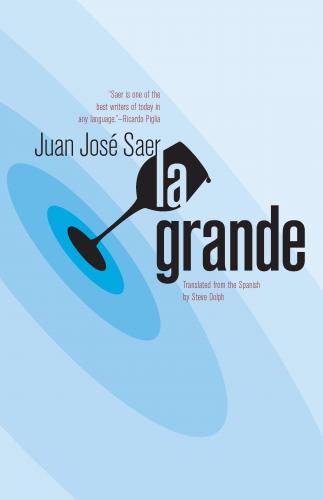Praise for
Juan José Saer
“Brilliant. . . . With meticulous prose, rendered by Dolph’s translation into propulsive English, Saer’s The Sixty-Five Years of Washington captures the wildness of human experience in all its variety.”—New York Times
“What Saer presents marvelously is the experience of reality, and the characters’ attempts to write their own narratives within its excess.”—Bookforum
“A cerebral explorer of the problems of narrative in the wake of Joyce and Woolf, of Borges, of Rulfo and Arlt, Saer is also a stunning poet of place.”—The Nation
“To say that Juan José Saer is the best Argentinian writer of today is to undervalue his work. It would be better to say that Saer is one of the best writers of today in any language.”—Ricardo Piglia
“Juan José Saer must be added to the list of the best South American writers.”—Le Monde
“The author’s preoccupations are reminiscent of his fellow Argentinians Borges and Cortázar, but his vision is fresh and unique.”—The Independent (London)
Also by
Juan José Saer
in English Translation
The Clouds
The Event
The Investigation
Nobody Nothing Never
The One Before
Scars
The Sixty-Five Years of Washington
The Witness
Copyright © Juan José Saer, 2005
c/o Guillermo Schavelzon & Assoc. Agencia Literaria, [email protected]
Translation copyright © Steve Dolph, 2014
Afterword copyright © Steve Dolph, 2014
First edition, 2014
All rights reserved
Library of Congress Cataloging-in-Publication Data: Available upon request.
ISBN-13: 978-1-934824-96-2
This project is supported in part by an award from the National Endowment for the Arts.
Text set in Bodoni, a serif typeface first designed by Giambattista
Bodoni (1740–1813) in 1798.
Design by N. J. Furl
Wine glass illustration designed by Fabio Meroni / studio Slash
Open Letter is the University of Rochester’s nonprofit, literary translation press:
Lattimore Hall 411, Box 270082, Rochester, NY 14627
For Laurence
Was it I who was returning?
—Juan L. Ortiz
the solid things were gone, and only
what was transient remained.
—Quevedo
e vidi lume in forma di rivera
fulvido di fulgore, intra due rive
dipinte di mirabil primavera.
—Paradiso, XXX 61–63
Le cadavre exquis boira le vin nouveau.
—Abbreviated Dictionary of Surrealism
Contents
Thursday: The Flooding
Friday: The Wine
Saturday: Margins
Sunday: The Hummingbird
Monday: Downriver
Translator’s Afterword
HALF-PAST FIVE, GIVE OR TAKE, ON A RAINY AFTERNOON in early April. Nula and Gutiérrez are approaching, at a diagonal, the corner of an open, nearly rectangular field bordered at one end by a mountain sparsely covered in acacias, and behind which, still invisible to them, the river runs.
The sky, the earth, the air, and the vegetation are gray, not with the metallic shade that the cold in May or June brings them, but rather the greenish, warm porosity of the first autumn rains that, in this region, can’t quite extinguish the insistent, overwhelming summer. Both men, walking neither fast nor slow, a short distance apart, one in front of the other, are still wearing lightweight clothes. Gutiérrez, walking ahead, has on a violently yellow waterproof jacket, and Nula, who hesitates at each step, unsure where to place his foot, a red camper made from a silky material with a slick and shiny texture, that in his family dialect (it was a gift from his mother), they jokingly call parachute cloth. The two bright spots moving through the gray-green space resemble satin paper cutouts collaged on a monochromatic wash, the air the most diluted, and the clouds, the earth, and the trees the most concentrated grays.
Nula, because he’d come on business—to deliver three cases of wine, a viognier, two cabernet sauvignon, and four local chorizos ordered the week before—and planned to visit a few other clients that afternoon, had dressed somewhat carefully, and besides the red camper has on a new shirt, a white, lightweight, short-sleeve sweater, freshly ironed pants, and shiny loafers that explain his cautious advance in contrast to the other’s inattentive, sure step and constant chatter as he carelessly and noisily sets his muddy rubber boots on the saturated patches of grass bordering the narrow, sandy path or in the sporadic puddles that interrupt it.
The gray background lends the red and the yellow an almost extravagant, overwrought brilliance that intensifies their presence to the eye in the empty field while paradoxically, somehow, causing them to lose, to the mind, a good portion of their reality. In the desolate poverty of the landscape, the striking garments, possibly because of their price (the yellow one, although it’s European and more expensive, nevertheless looks more worn-out) produce an obvious contrast, or constitute, rather, an anachronism. The excessive presence of singular objects, though they break up the monotonous succession of things, end up, as with their overabundance, impoverishing them.
Calmly, concentrating on each word, Gutiérrez holds forth with disinterested disdain, half-turning his head over his left shoulder every so often, apparently to remind his company that he’s the one being spoken to, although because of the distance that separates them, the open air, the movements that disperse the
